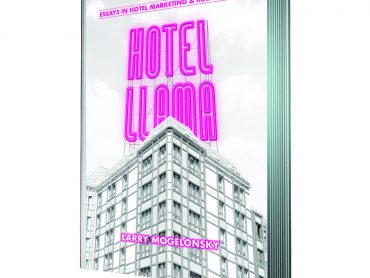The OTA Debate: Our Industry Just May Be at Stake
From the title of my last article on this matter – ‘No Defense for the OTAs’ – it would be easy to depict my adamant stance on this critical issue as one of hellfire and brimstone. Rest assured though, I didn’t settle on this overnight. And judging from the comments I have received, many seem to agree.
In fact, of the numerous and detailed responses from industry members, not one has genuinely argued in favor of the OTAs. On the contrary, some individuals have even harkened their utilization to that of a mainline drug. Yet, every week it seems there’s another editorial attempting to dispel this stigma and mollify our concerns. However much I try to view this issue through a bipartisan lens, there just hasn’t been enough evidence to concur with the few and vocal OTA sympathizers.
The much-quoted STR report presented at the Hotel Data Conference earlier this year found that in 2010, OTAs accounted for 9.8% of rooms booked, with property-direct sales amounting to 51.6%, brand.com 17%, CRS/voice 13.7% and GDS 7.9%. The OTA’s share seems rather benign, but let’s apply some channel logic just to be sure. Direct property bookings are mostly group sales, wholesale and preferred contracts. This is business not considered “up for grabs” from a consumer marketing standpoint. When we subtract this from chunk from the pie, the OTA share doubles to about 20%.
Imagine Losing One Fifth of Your Customer Base
Look at the numbers again. This share means that one in five of your FIT customers are gone. They now book through the OTAs and are primarily loyal to them, not necessarily your hotel. Remember that the customers who come through an OTA have forgone all of your other marketing channels. Their go-to for reservations is, first and foremost, an OTA website.
Furthermore, assuming that a conversion of OTA customers back into hotel customers can be accomplished while on property is naïve. Most FITs are looking to explore new places, and an OTA website – which combines transportation and accommodations in a single booking interface, along with oftentimes cheaper prices – is fairly hard to resist. Unless they are utterly enchanted by their entire stay, someone who finds your property through an OTA will likely go through this channel again to find their next vacation. The OTAs’ interfaces make it far too easy to seek out the ‘next best thing’ instead of prompting their clients to return to previously visited hotspots. And after each trip when their friends ask them about where they stayed, I wonder how often the response is, “Oh, just some place I found online.”
This mental shift is just the tip of the iceberg. To give you a little perspective, my hardliner stance against the OTAs has arisen out of my eight years of brand management for Procter & Gamble and PepsiCo, where wide-scale marketing campaigns were germane to the whole process. Bar none, television advertising, when well executed, delivers customers. The OTAs know this and are broadcasting some very sticky material to grow their market share. Conversely, hoteliers’ use of this critical medium has nosedived in recent years – we’re being out-advertised! My experiences working in numerous product categories predicate that voice share will eventually match market share; it’s only a matter of time.
Another Cause for Alarm
Query any list of the Top 100 Worldwide Brands and you’ll be hard-pressed to find a single hotel brand. True, the OTAs are not there either, but hotels have a hundred year head start, so one would think they’d have some major equity already in their brands.
A large part of the rationale here may be that the hospitality industry is chock-full of new brand introductions from the majors, each trying to wedge into an eclectic niche and out-decorate or out-boutique their competitors. There are now so many variations of Starwood, Hilton, Intercontinental and the other major chains, all more or less missing the point – build your core brand first, and then diversify.
I wouldn’t be surprised if the OTAs are featured on these world brand lists soon, but I cannot say the same for the major hotel brands, especially after they’ve become so diluted. How are customers supposed to identify with one hotel or another when they’re marred in confusion? Just food for thought if you’re considering any sort of brand segmentation in the near future.
This all said, we can debate the OTA issue ad nauseum, but it won’t solve anything. What are we doing to do to rectify what might well be described as the “global warming” type problem within the hotel industry?
With hotel GMs and revenue managers driven by a need to deliver short-term room and revenue targets, I fear this issue can’t be solved at the individual property level simply by implementing a new pricing strategy. The charge has to be led by the corporate head offices at the major chains. Their actions will reverberate throughout the industry and even trickle down to benefit the independents.
So, my gauntlet to the big five in hotels: stop being decorators with more seemingly endless new brand variants. Have your core brand stand for something and tell the world through mainstream multimedia campaigns, not just one-off ads in Travel & Leisure or Condé Nast Traveler (both are great publications, but by themselves insufficient to move core brand value indices). Invest in your business to build your brand’s equity. Above all, be innovative and mange your channels, rather than having your channels manage you.
(Article by Larry Mogelonsky, published on eHotelier on November 7, 2011)



